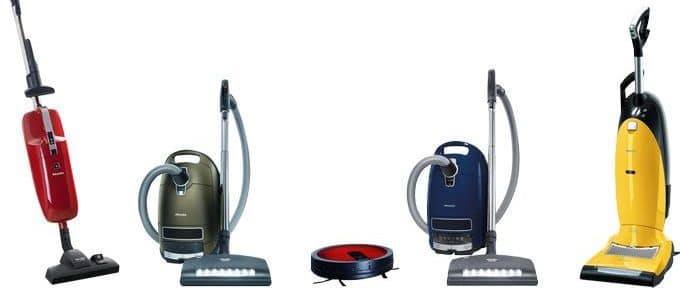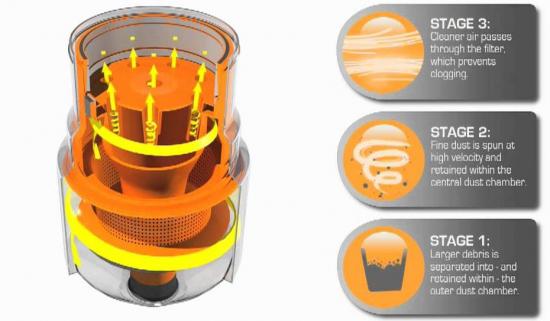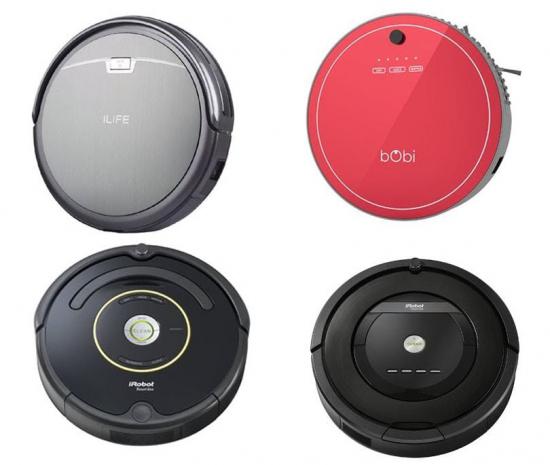A vacuum is an indispensable attribute of any modern apartment. The high popularity of this device encourages companies to constantly improve the range and functionality their models. Of course, the abundance of sentences sometimes makes it difficult to choose the optimum vacuum. Classification in this segment can simplify the task.
Of course, the criteria for any classification can be controversial. It can be based on the operation principle, power, filtration, application area, design features, etc. As a result, such a classification can be quite complex and inconvenient. Additionally, many modern models often combine various key features. For example, some modern upright models include the hand model option as in the Black & Decker models.
Classification in the market has developed naturally. Most modern trading platforms classify vacuums as canister, wet / dry, upright and robotic models. Of course, it’s not perfect and contains quite a lot of contradictions. For example, some upright models use cyclone engines or aquafilters. But this classification is simple and convenient for most consumers.
Modern models use many innovative solutions that increase the cleaning efficiency and ease of use. The functionality of modern vacuums includes various ways of adjusting suction power, vibration cleaning the filters, self winding cable, etc. Of course, the functionality affects the model cost.
Brush is one of the main accessories and significantly affects the efficiency.
Therefore, companies constantly improve it. Modern models use turbo brush with a mechanical or electric drive. Each of them has cons and pros. Mechanical models are cheap and reliable. Electric turbo brushes are more functional, but their cost is much higher.
Canister vacuums
These vacuums are the simplest and most common. They suck up dust and debris with the help of air stream and collect its in a dust bag that can be disposable or reusable.
Today, vacuums use disposable and reusable dust bags, including synthetic bags, paper bags or with the addition of synthetic fibers. Paper bag is typically made single-layer, two-layer or three-layer. Reusable bags are made of vlieseline or fabric.
Canister vacuums are cheap, reliable, effective for collecting large debris and can use various inexpensive filters. The need for regular cleaning the filters and dust bag, lack of automation and a strong dependence of suction power on the filling level are its main disadvantages.
Cyclone vacuum
The cyclone vacuum uses the centrifugal force of the vortex flow. The sucked dirty air is swirled by a vortex flow in the working chamber. Centrifugal force directs particles of garbage and dust to the chamber walls, cleaning the air.
Vortices are formed by means of conical blocks, the number of which can exceed 10. Such a design is called multi-cyclone system. For example, one of the last Bissell vacuums uses 12 such vortex generators.
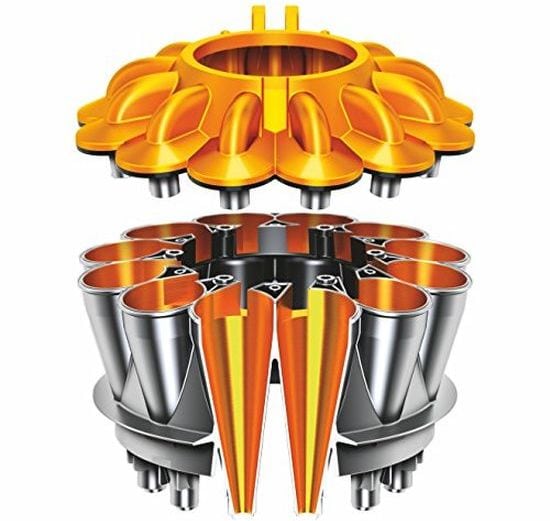
As known, this technology was invented by the Englishman James Dyson. In the future, he founded Dyson Company that today is one of the leaders of this segment. The company continues to constantly improve these engines. The video at the end shows their adjustment and work.
The absence of dust bags, high power and filtration efficiency of large garbage, the lack of dependence of suction power on fill level, compactness, ease of use and stylish design are the main advantages of these models.
The low efficiency of dust filtration, the accumulation of static electricity due to air vortices, the rapid clogging the filter in the case of unstable vortices, the lack of power level adjustment and the high cost of filters are the main disadvantages of this technology.
Wet/dry vacuums

These vacuums use water to clean the air.
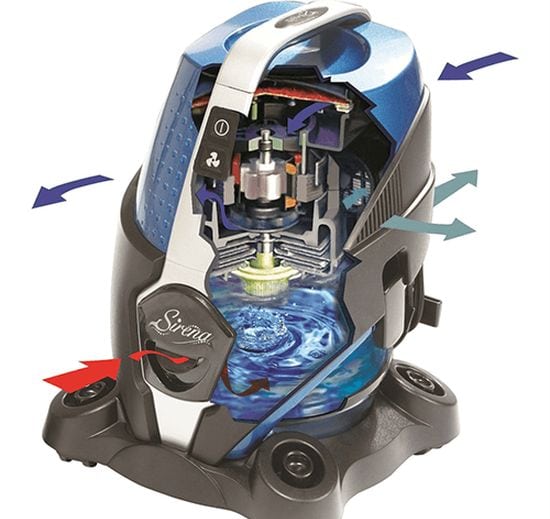
The peak popularity of these models falls at the end of the last century. Humidification of air was their main advantage in comparison with traditional models. Today wet / dry models are on the market in a wide range. Ridgid, Craftsman, ShopVac and Vacmaster brends are the main leaders of this segment.
High performance, absence of dust bag, air humidification, use of detergents, additional functions of the aromatization and deodorization and possibility of collecting fluid from the surface are their main advantages.
The inefficiency of garbage collection with water repellent properties, the reduction in the cleaning quality with decreasing water level, the possibility of splashing during cleaning, filter washing after every cleaning to prevent the reproduction of microorganisms, the high cost of models and filters, and the large weight and dimensions are the main disadvantages of such models. Additionally, wet cleaning is not always suitable for pile and parquet because of the difficulty of drying them.
Upright vacuums
Of course, upright vacuums are some of the most popular.
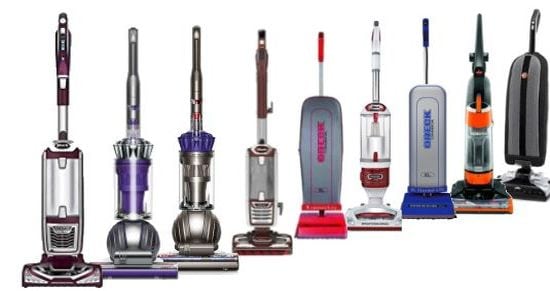
Today Shark brand offers the widest range of models among the leaders of this segment.
The high efficiency of the pile cleaning, convenient storage, battery, stylish design, high maneuverability and versatility for models with a removable suction unit are their main advantages.
Large weight and dimensions, inconvenient cleaning the surface under low furniture and high noise level are their main disadvantages.
Robotic vacuums
Rapid development of digital technologies was a prerequisite for the emergence of robotic vacuums. The first models appeared only at the beginning this century, but already today they have gained popularity among many consumers. Moreover, the rate of improvement of these models is the highest. Navigation systems, automatic recharging, wet wiping, remote control, including WiFi, etc. are rapidly improving, increasing their competitiveness.
American iRobot Company became the pioneer of this segment, introducing the Roomba model in September 2002. Today, iRobot is one of the leaders in their development and production, competing with American Neato Robotics and with Chinese Ecovacs and iLife. Of course, many other companies also develop and produce such vacuums. But the main assortment of the model line belongs to these four brands.
Full automation, compactness, cleaning under low furniture and low noise are their main advantage.
High price, small capacity of garbage container, low suction power, short operation time without recharging and the reduction in suction power when using HEPA-filtration are the main drawbacks.
